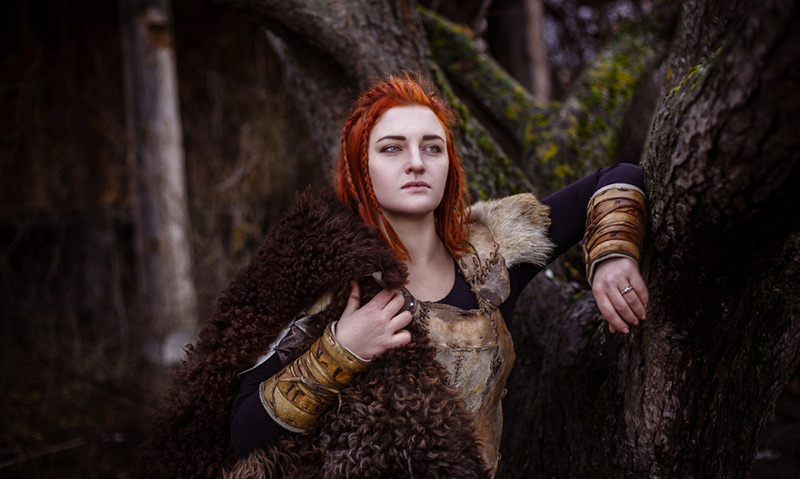
Was there such a thing as Viking fashion? We piece together clues from the sagas with archaeological evidence to bring you this guide to Viking clothing.
Have you ever wondered what type the clothes the Vikings wore? How did they live in such harsh enviroments and function long before modern fabrics and designs?
Much remains a mystery and cannot be answered definitively. However, this article will piece together what we do know about Viking garments.
How do we know anything about Viking clothes?
We know very little on account of the limited archaeological evidence that is available. In most circumstances, materials and fabrics do not preserve very well. When fragments are recovered, they are usually very small and often damaged.
However, we can also draw from written evidence such as the Norse sagas. Together with archaeological evidence, we can piece together a somewhat accurate picture of Viking clothing.
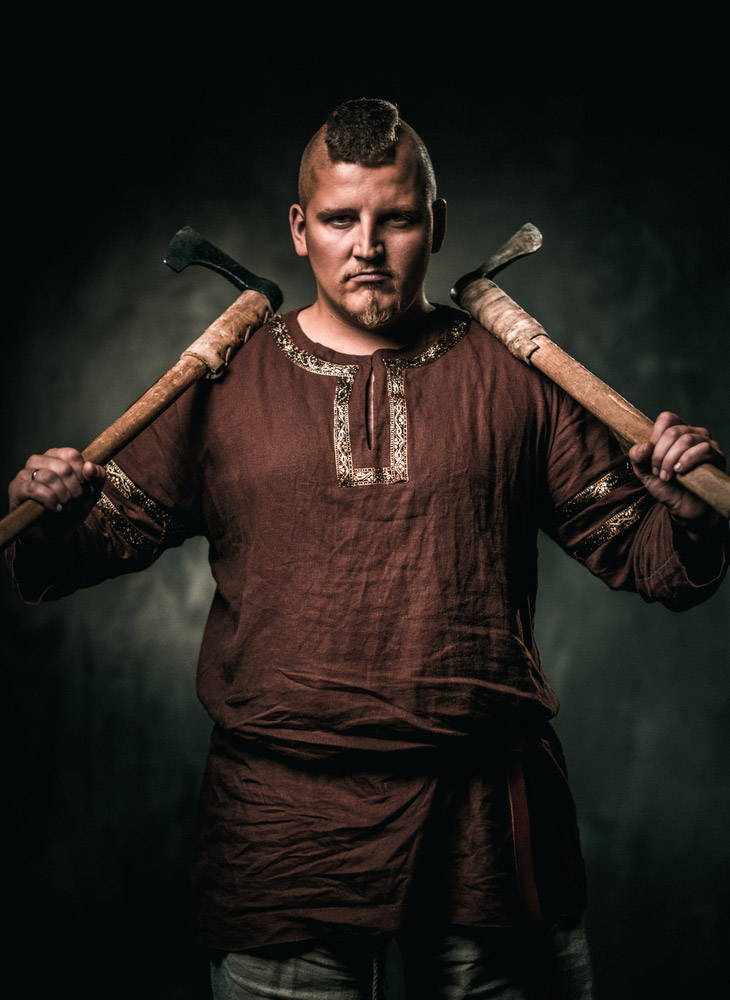
The influence of the environment
During the Viking era, the environment was cold, harsh and unforgiving. It is these conditions that naturally influenced the type of clothes the Vikings wore.
Read more: Why Did the Viking Age Start?
The cold and hostile conditions meant any clothing had to keep them warm and protect them from the elements in those colder months. But they also had to be practical and flexible to wear for the everyday tasks they had to carry out.
It is generally considered that the Germanic populations of northern Europe wore the same or very similar types of clothing as the Vikings. There is a distinction to be made between the clothing that men wore and the types of clothing women wore. Their clothes were also influenced by money and social importance.
Viking hierarchies: Clothing as a status symbol
During the Viking Age, there was a social hierarchy. Those of higher standing, typically those with more silver coins, were able to get the more beautiful and higher quality clothes.
You may not think that Vikings concerned themselves too much with fashion, but it is said to have played a part. Firstly, one would dress in order to show their standing within the community.
The higher their social status, the higher the quality the garment and better presented one might be. Secondly, some Vikings would dress in order to appeal to the opposite sex.
Colours and patterns
One might think that Viking clothes were made just for practicality, dull and boring, to match the often gloomy and grey lands in which they lived. In fact, experts believe they were from that.
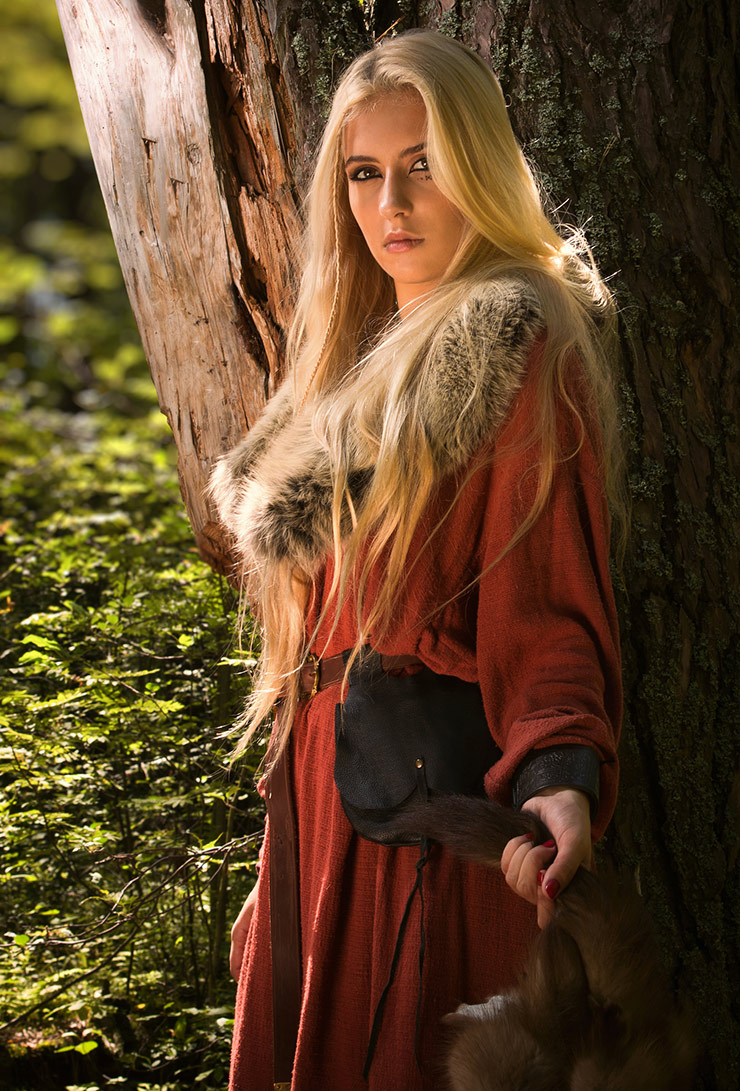
It is believed that many of their clothes were bright and colourful. In addition to black and white, the Vikings also had blue, red, yellow, and various other colours to choose from. But some colours will have been harder to come by than others.
Read more: Viking Funerals & Burial Rituals
Perhaps one of the most important colours in terms of its significance was the colour red. This was a valuable colour for prestige and in terms of monetary value too. It was one of the more expensive colours because it derived from the madder plant root, a plant that wasn’t native to Scandinavia. Instead, the Vikings had to trade and barter for it from other European tribes, which pushed up its value.
Some clothes also had intricate patterns on them. We can see from the detailing found on things like weapons and even longships just how much the Vikings liked to decorate things. And this points towards clothing being far from plain and ordinary, perhaps inline with the social hierarchy or importance.
What did Viking men wear?
Layers were big during the Viking era too. Whether men were ship building, hunting or raiding, it was important for them to keep warm during their physical work.
Base garments were likely lighter and shorter sleeved in the warmer months and thicker and longer during the dark of winter. Colourways here are unknown but it is likely they varied from the colours mentions earlier.
On top of this base layer, men would were a tunic. This outer garment was most probably slightly thicker and draped long to knees. Some of the tunics may have also have been patterned or had significant symbols woven into to them for more significant members.
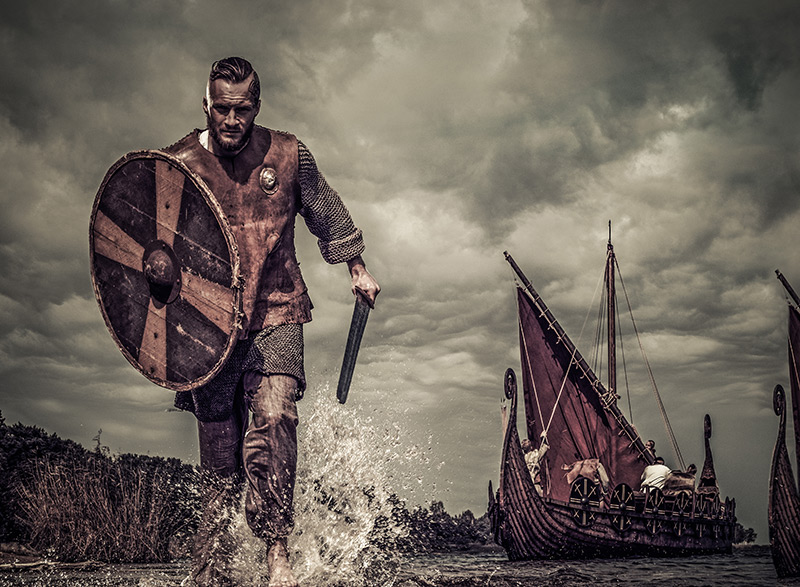
Men’s trousers were relatively simply. They had no pockets and could be both loose-fitting or tight. They were produced using local wool or linen.
Perhaps rather unsurprisingly men’s underwear was made mostly from linen rather wool. This was because linen was far more comfortable on the skin than wool, although, some of those in lower social circles most likely had no option but to wear wool because it was far cheaper.
Finally, almost like the Vikings foreseen a fashion trend the 1980s, men also wore leggings or wool wrappings around from their knees down to their ankles and feet.
Clothes for Viking women
Turning our attention to Viking women, we can see some differences. They were made largely from the same materials, wool and linen, but were cut differently.
For Women too, it was important to keep warm. A base layer consisted of a linen under-dress which stretched from the shoulder down to ankle length. This layer was either plain or patterned depending on what Viking community one belonged to.
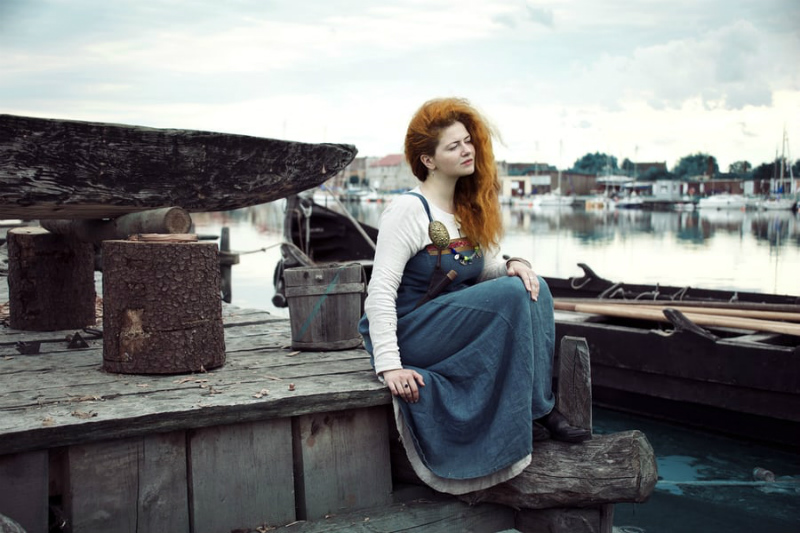
On top of that, there was likely a wool strap dress which was slightly shorter in length. The two layers were fastened together at the straps by two iron or bronze brooches. If a woman was of very high standing, she might have had gold brooches.
Neither the men’s nor the women’s clothes contained buttons. Nor did they have practical additions like pockets. But hoods or some kind of head garment made wool or linen would have been a common during winter.
Read more: Popular Viking Names
Silk garments were available but because they had to be imported across great distances, they were not used so much, perhaps reserved only for the elite members of Viking societies.
Viking warrior clothes
The types of clothes men wore in battle were a lot more robust. Cloaks or much thicker tunics were preferred, perhaps made out of something like sheep's skin or some other animal, for those long voyages. In this instance it was vital to keep warm ahead or a battle or raid.
In battle, a strong leather belt around the waist would hold weapons in place, but also meant they were within easy reach should they need them. The belt would hold an axe, a sword and other smaller instruments used in battle and pillages.
Men would also wear thick, leather body armour for protection and have a shield for protection from sword strikes or blows from axes. Typically, though, with the exception of metal helmets (no horns, of course), Vikings did not have overly heavy clothing or armour, largely because it was a hindrance to their manouvorabilty in battle.
Viking socks
In the winter, it was important to keep warm, so it would be very common for the Vikings to wear things like wool socks, scarves or even mittens.
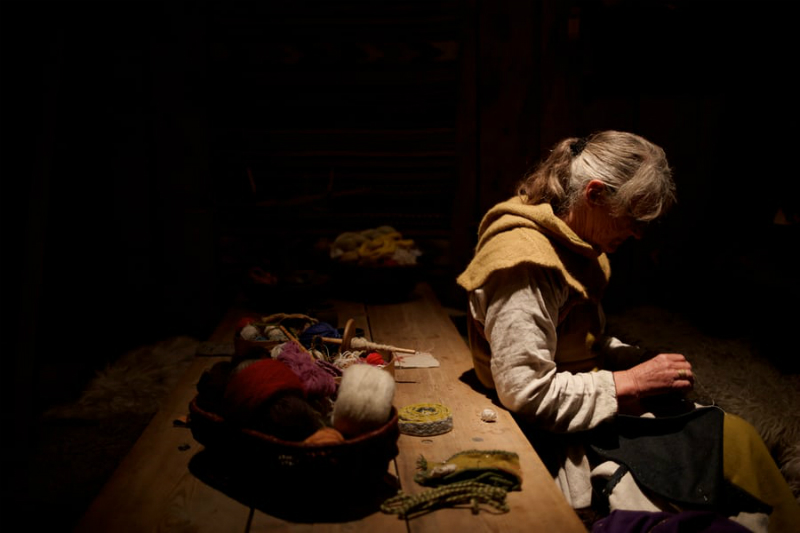
Such items were not knitted as you might expect but made during technique known as Nálbinding (needle-binding). This process ensured that socks, or mittens and scarfs, were very tough and hard wearing.
Viking shoes
It was a common for Viking shoes to be of ankle height, although boots were also worn. Both were made out of leather in a process known as the ‘turnshoe’ technique. It involved the shoe or book being made – stitched – inside-out and then pulled through into its final shape. The shoes were likely fastened by at least one toggle that they could adjust for a better fit.
Even though the shoes were made out of leather, they didn’t last more than a few months and certainly never over one year. The sole would likely wear through owing to wear and tear and require replacing.
The type of clothes the Vikings wore was first and foremost for practical purposes. And just like today, what they wore altered with the change of seasons. Those of higher standing or simply those with more money, garments may have been of better quality with patterns or symbols.
So next time you dig out that big winter coat in late autumn, think about the Vikings, a people that we have more in common with than you might think.


In “colors and patterns” you accidentally omitted the word “far”
Great article, thank you! I do have two questions, though. First, I have read that some of the wealthy men who went raiding were able to own and wear chain mail. The less wealthy raiders would wear leather armor, quilted and padded. Is this, to your knowledge, correct?
Secondly, there is a lot of conflicting information about the wearing of earrings. Some sources say that the Scandinavians who would have been Viking never wore earrings, yet I’ve seen (online) pieces of jewelry in the Metropolitan Museum of Art labeled as Viking earrings. I haven’t seen visual representations of Viking earrings, in grave goods or the Bayeux tapestry. Do you have information regarding the wearing of earrings, by either gender? Thank you very much.
I find it sad that you’re article on viking clothing only the last2 pictures actually represent the time period and culture. While the rest are a mix of medieval and fantasy horseshit thrown together by someone who’s watched to many seasons of Vikings on tv…
Well believe it or not we don’t have access to photography from 1,200 years ago. Thanks for your polite contribution to the discussion though, I bet you’re really interesting at parties.
Far as I can tell your photos are okay, and including popular culture references isn’t wrong, as long as your content is correct, which it is, as far as current availability of research shows. Ignore those who cannot be kind.
Thank you for this! Laugh of the day for your reply to Andy 🙂 And thanks for the information that I was actually looking for 😉
I wonder why you are reading an article about Norse clothing if you are already such an expert?
This website is great it really helped me with school and studying
and dont listen to andy
me too this website is great
POV: you dont have a life so you resort to commenting on some random post about something 600 years ago
Vikings did not have black clothing. And the enviorment in norway at that time was actualy warmer and more stable than today. Tunics are usualy long armed and the under tunic is usualy longer than the overe tunic so that people could se that yøu where rich enugh to have 2